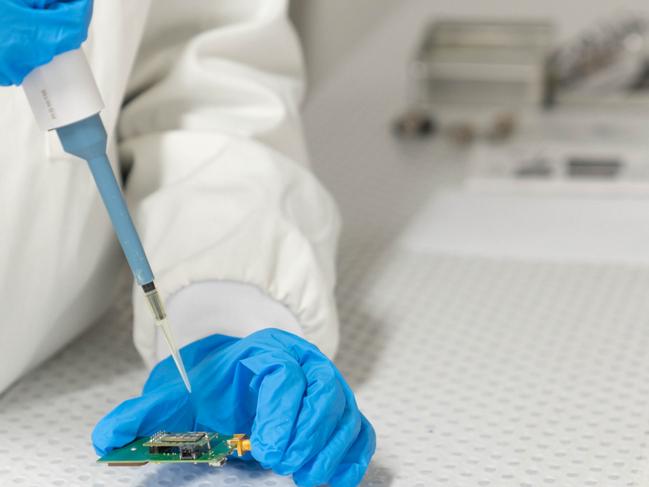Monash team engineers new way to detect Alzheimer’s disease
Monash University engineers have developed a smart sensor no bigger than a Tic Tac box to detect Alzheimer’s disease with a simple finger-prick blood test.
Victoria
Don't miss out on the headlines from Victoria. Followed categories will be added to My News.
A handheld device about the size of a Tic-Tac box is set to revolutionise how Alzheimer’s disease is diagnosed globally.
Developed by engineers at Monash University, the first-of-its-kind blood test may allow GPs worldwide to quickly screen for Alzheimer’s disease (AD) which is the most common form of dementia.
An estimated 472,000 Australians live with dementia and AD, a disease of the brain that affects memory, thinking and behaviour and is likely triggered by the build-up of beta amyloids and tau proteins.
Until now the only way to detect this has been with the use of expensive and intrusive brain imaging requiring radiation exposure or through lumbar punctures to remove cerebrospinal fluid.

The designers say while there are drug candidates being investigated to slow the progression of the disease, this finger-prick electronic test is the first to offer painless early detection with instant results from a single drop of blood.
Monash University says it uses the world-first patented sensor technology which can detect ultra-low concentrations of disease markers in the blood in minutes.
Sudha Mokkapati from Materials Science and Engineering at Monash invented the tiny tool she calls CansenS that she expects to sell for around $100.
Professor Mokkapati says it detects an increase in beta amyloids and tau proteins biomarkers before early symptoms develop.
“We had been working on the device for four years to target the biomarkers in rare cancers for which there is no early diagnosis,” Professor Mokkapati says.
“We were asked if it could also be used to detect biomarkers for AD in middle-aged adults. I said yes, because I knew our electronic signal was the only way to see them from a blood sample.

“They come and sit on the surface of our material, called biosensors, and then the currents change, so that’s how we detect them.
“We’ve completed testing that shows the technology is highly advanced by design and capable.”
She says it has the potential to dramatically change the trajectory of AD for many patients and save millions of dollars of associated healthcare costs.
Key collaborator Matthew Pase from Monash’s School of Psychological Sciences says the device is exciting.
“I think it could improve on current tools in the sense that it is more accessible, easier (to use) and more cost effective,” Professor Pase said. “And it can be done in a doctor’s office.”
He says if funding is available for clinical trials, the device could be rolled out “pretty quickly” but that he has mixed feelings about the use of the tool for population screening.
“I think there’s danger in screening people who don’t have symptoms,” Professor Pase said.
“Screening would come in people who have cause for concern.”

Professor Pase said these would be patients with memory and thinking problems.
“You could do a test like this to see if it’s likely due to AD because that might inform the kinds of treatment that you offer them.”
Professor Pase says there has been a lot of progress in the treatment of AD.
“The next frontier is looking in the blood, which is really exciting and opens up a lot more avenues.”
Professor Mokkapati says there has been global interest in the device and she hopes to attract funding for clinical trials “soon”.




